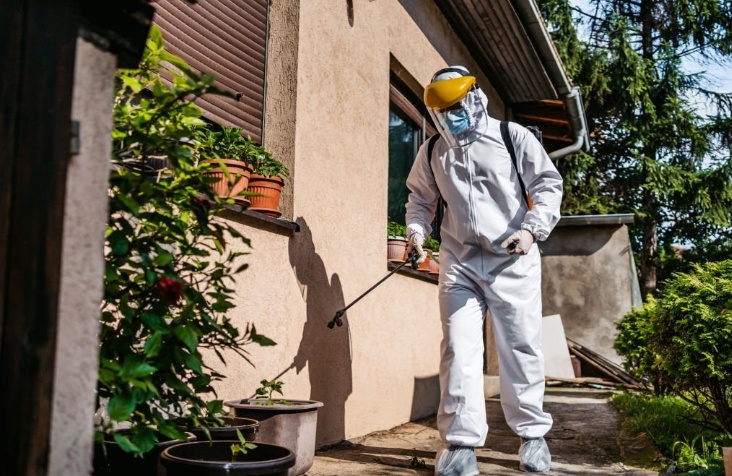Pesticides have long been a vital tool in pest control, helping to combat insects, rodents, and other unwanted pests that threaten agriculture, public health, and the environment. However, the overreliance on chemical pesticides has led to an alarming problem known as pesticide resistance. Pest populations are evolving and developing resilience to the very chemicals designed to eliminate them. In this blog, Pest Control Warrandyte will explore the rising issue of pesticide resistance, its causes, implications, and the importance of adopting integrated pest management strategies to address this challenge.
Understanding Pesticide Resistance
Pesticide resistance is the ability of pests to survive exposure to a pesticide that would typically be lethal to their species. Over time, repeated use of the same pesticide or pesticides with similar modes of action can lead to the selection of resistant individuals within the pest population. These resistant pests can then multiply, passing on their genetic traits to the next generation, rendering the pesticide less effective or completely ineffective.
Causes of Pesticide Resistance
-
Overuse and Misuse: Excessive and improper application of pesticides can accelerate the development of resistance. When pesticides are used without adhering to recommended dosage rates or frequencies, pests may be exposed to sublethal doses, allowing them to develop resistance.
-
Monoculture Farming: Monoculture, the practice of growing a single crop over a large area, creates an ideal environment for pests to thrive. Continuous planting of the same crop makes it easier for pests to adapt and build resistance to pesticides used in that area.
-
Lack of Genetic Diversity: Some pest populations have naturally occurring genetic diversity, making it more challenging for resistance to develop. However, certain pest species may have low genetic variability, making them more susceptible to developing resistance when exposed to pesticides.
-
Pesticide Mixing: Mixing different types of pesticides can inadvertently select for cross-resistance. If the different pesticides share a common mode of action, pests that are resistant to one of the chemicals may also be resistant to the others.
Implications of Pesticide Resistance
-
Reduced Effectiveness: Pesticide resistance reduces the efficacy of chemical treatments, leading to increased pest populations and potential damage to crops and structures.
-
Higher Costs: As pesticides become less effective, more frequent and higher doses may be required to achieve the same level of control. This can lead to increased costs for farmers and homeowners.
-
Environmental Impact: Increased pesticide use to combat resistant pests can have adverse effects on non-target organisms and the environment. Chemical runoff can contaminate water sources and harm beneficial insects and wildlife.
-
Public Health Concerns: Insecticide resistance can impact vector control programs designed to manage disease-carrying pests like mosquitoes and ticks, posing risks to public health.
The Role of Integrated Pest Management (IPM)
To address the issue of pesticide resistance effectively, the adoption of Integrated Pest Management (IPM) is crucial. IPM is a holistic approach that integrates multiple pest control strategies, including cultural, biological, mechanical, and chemical methods. The goal of IPM is to minimize reliance on chemical pesticides and prioritize prevention and long-term solutions.
Key Components of IPM:
-
Monitoring and Thresholds: Regular monitoring of pest populations helps determine if and when intervention is needed. IPM sets action thresholds, indicating when pest levels require control measures.
-
Cultural Practices: IPM emphasizes preventive measures such as crop rotation, diversification, and habitat manipulation to reduce pest pressure.
-
Biological Control: Natural enemies of pests, such as predators and parasites, are introduced or conserved to help regulate pest populations.
-
Targeted Chemical Application: When chemical pesticides are necessary, IPM focuses on targeted treatments, using the right product at the right time and in the right amount to minimize impact on non-target organisms.
-
Education and Research: Ongoing education and research are essential for continuous improvement of IPM strategies and staying ahead of evolving pest challenges.
Conclusion
Pesticide resistance poses a significant threat to effective pest control and the sustainability of agricultural practices. Understanding the causes and implications of resistance is vital for implementing measures to mitigate its impact. Integrated Pest Management (IPM) offers a balanced and eco-friendly approach to pest control, promoting the use of multiple strategies to manage pests effectively while reducing reliance on chemical pesticides. By adopting IPM practices and fostering collaboration among farmers, pest control professionals, researchers, and policymakers, we can address the rising issue of pesticide resistance and work towards a more resilient and sustainable future for pest management.


No comments yet